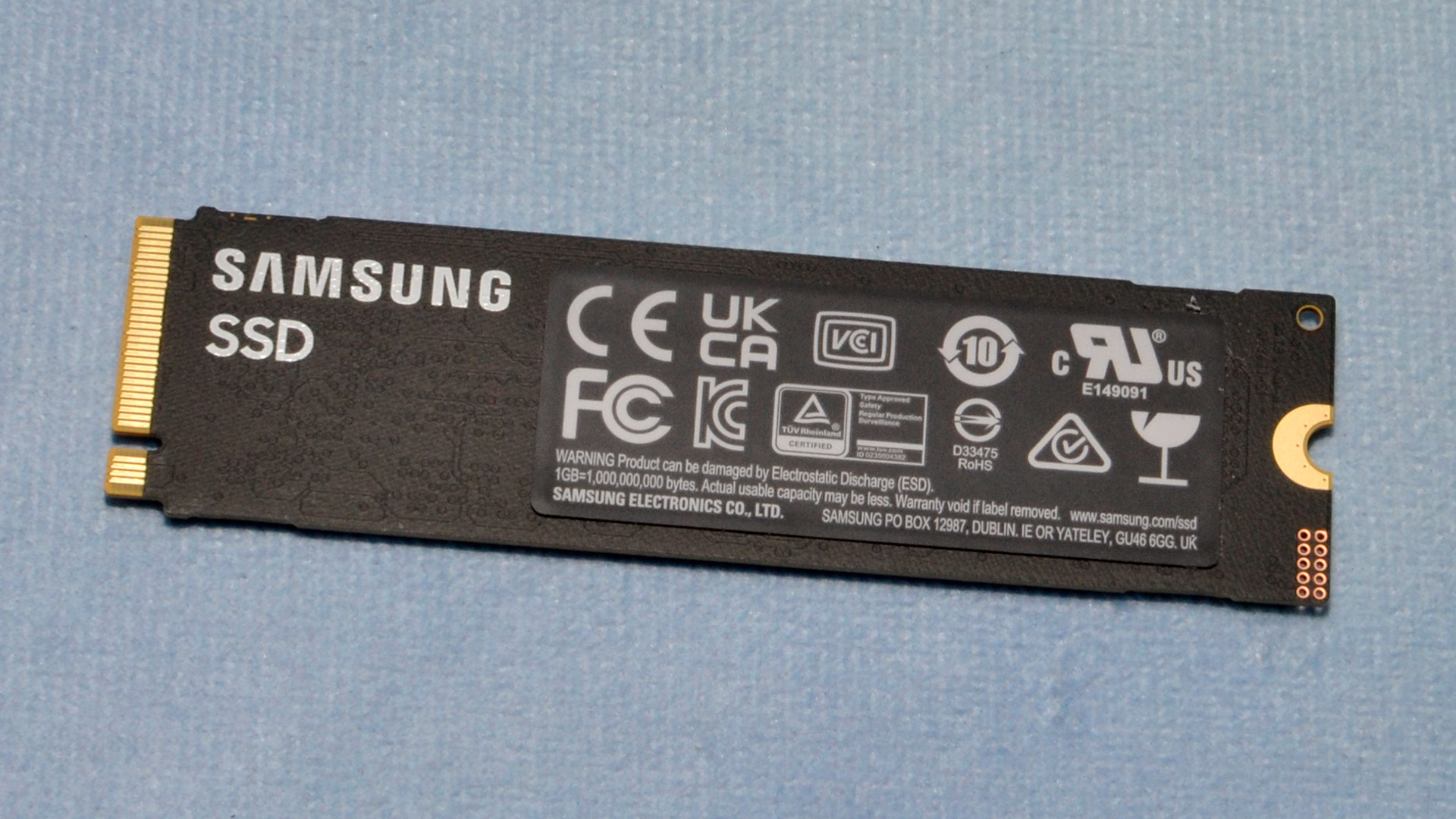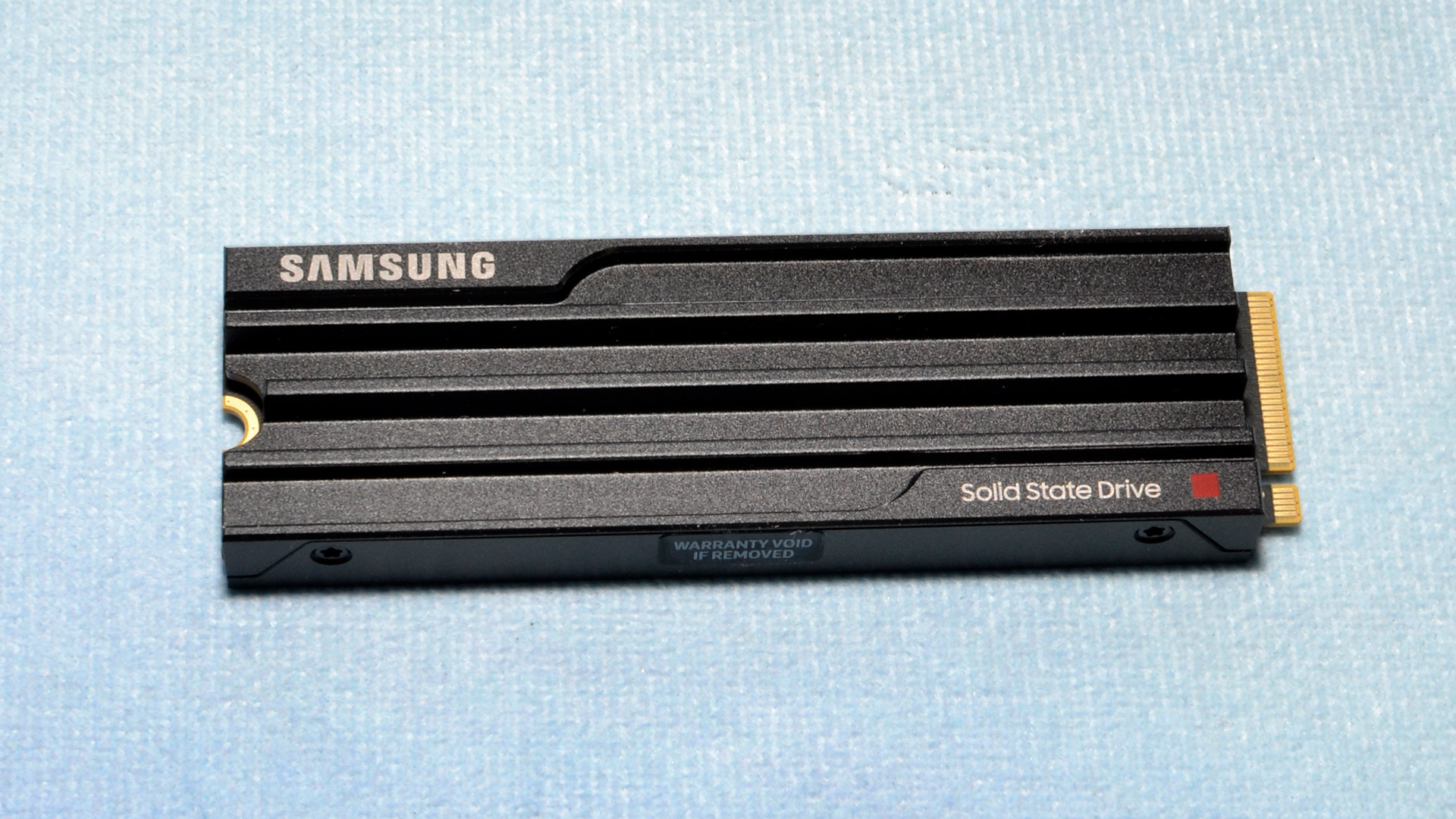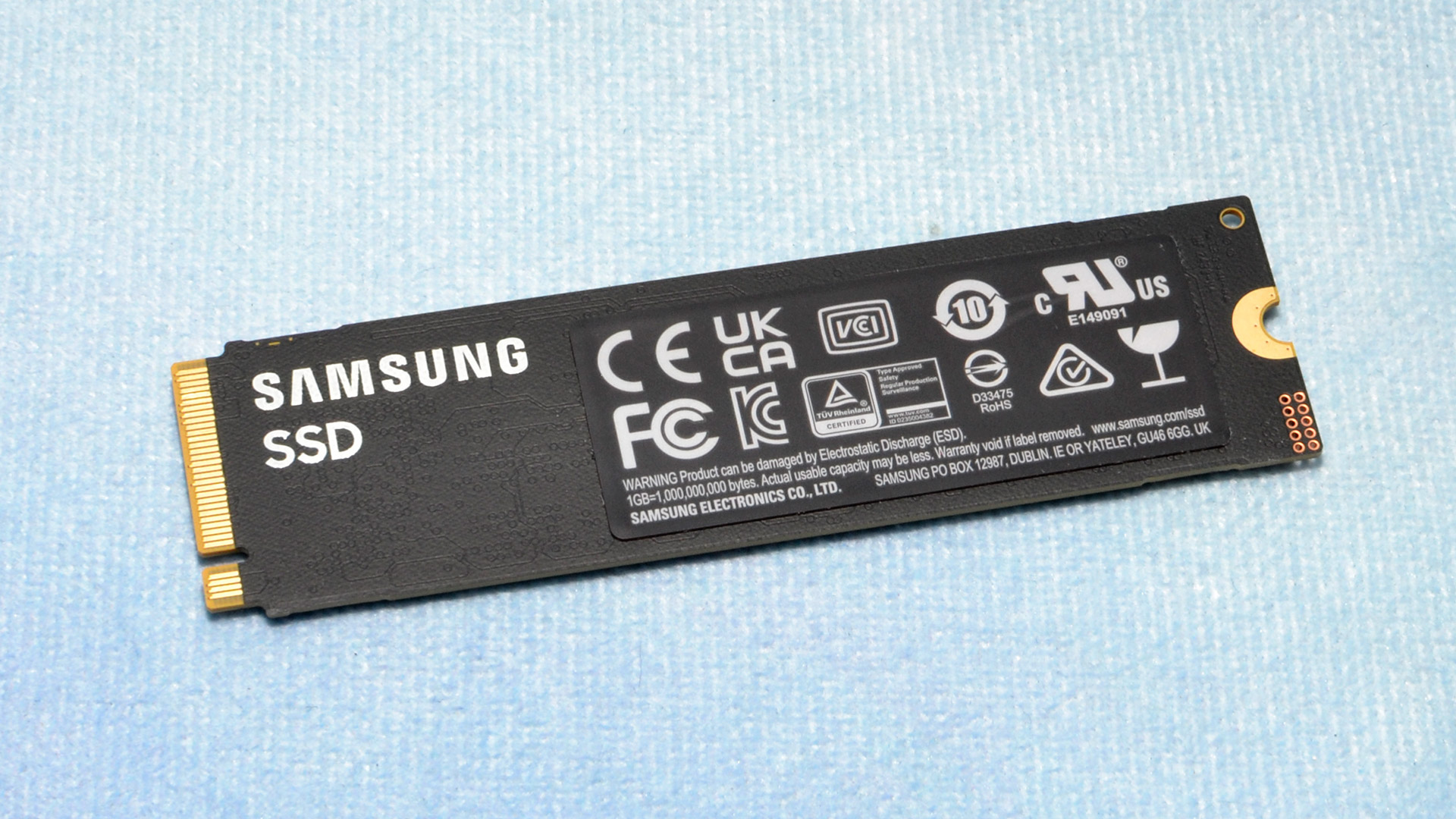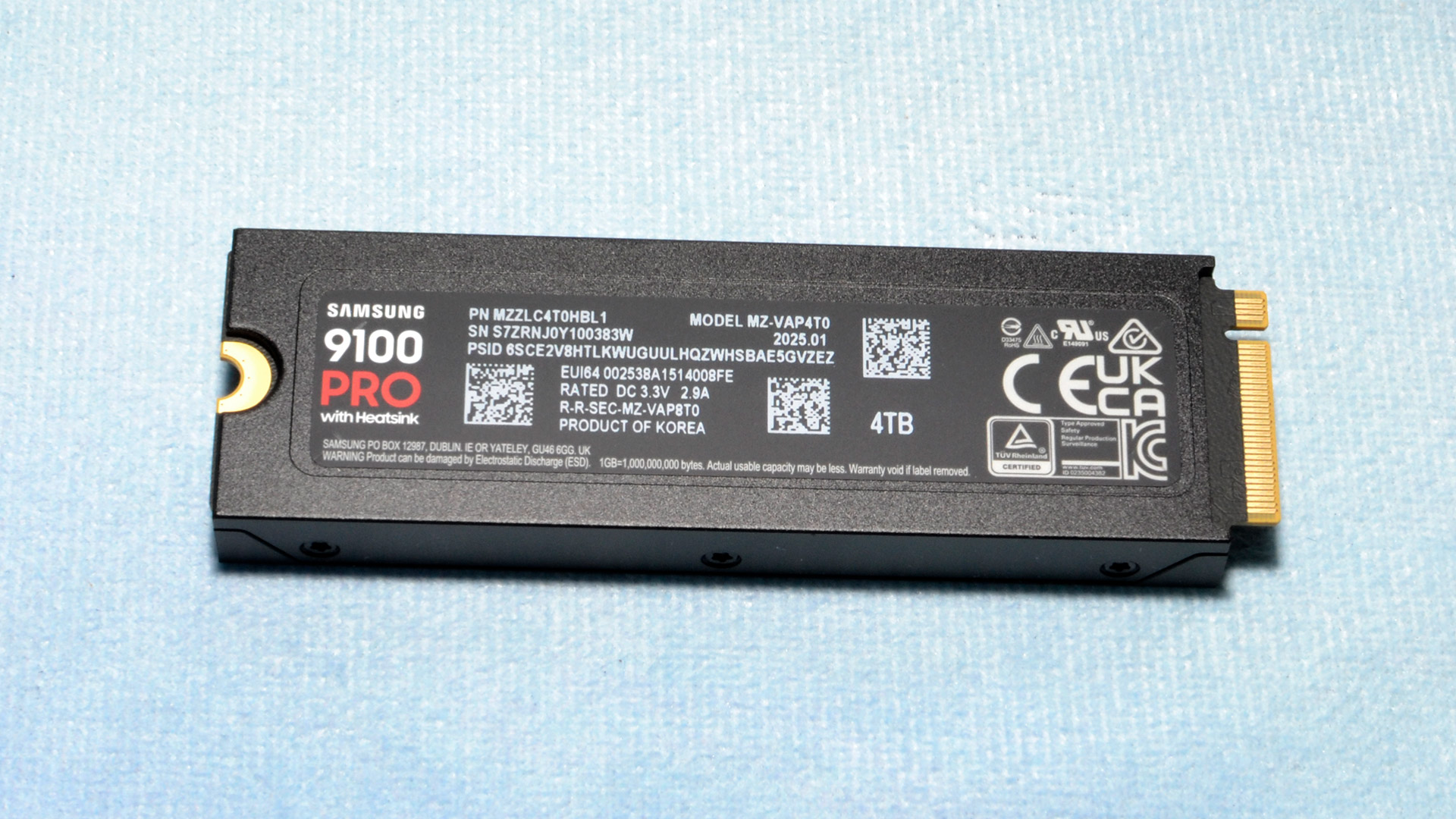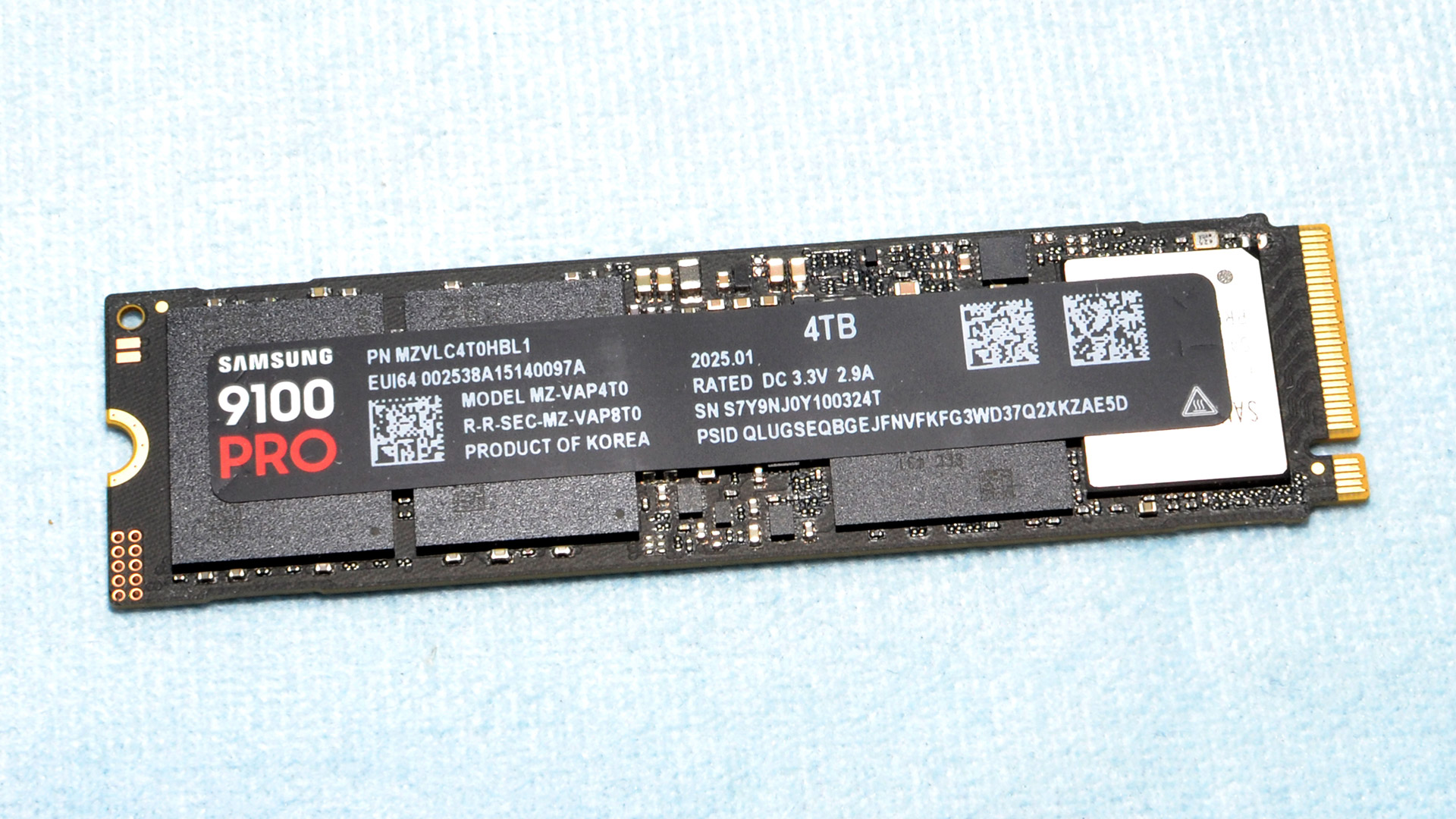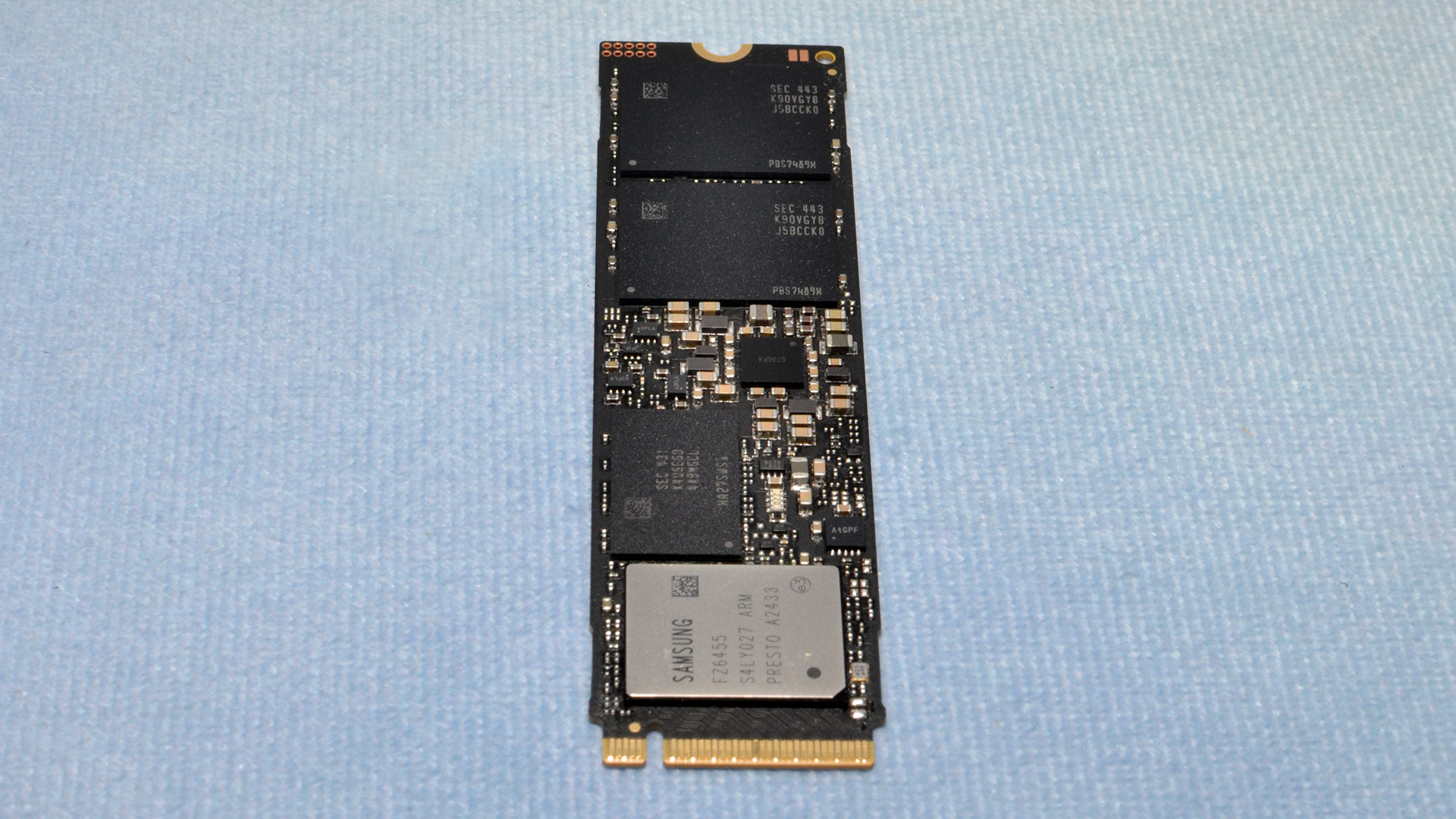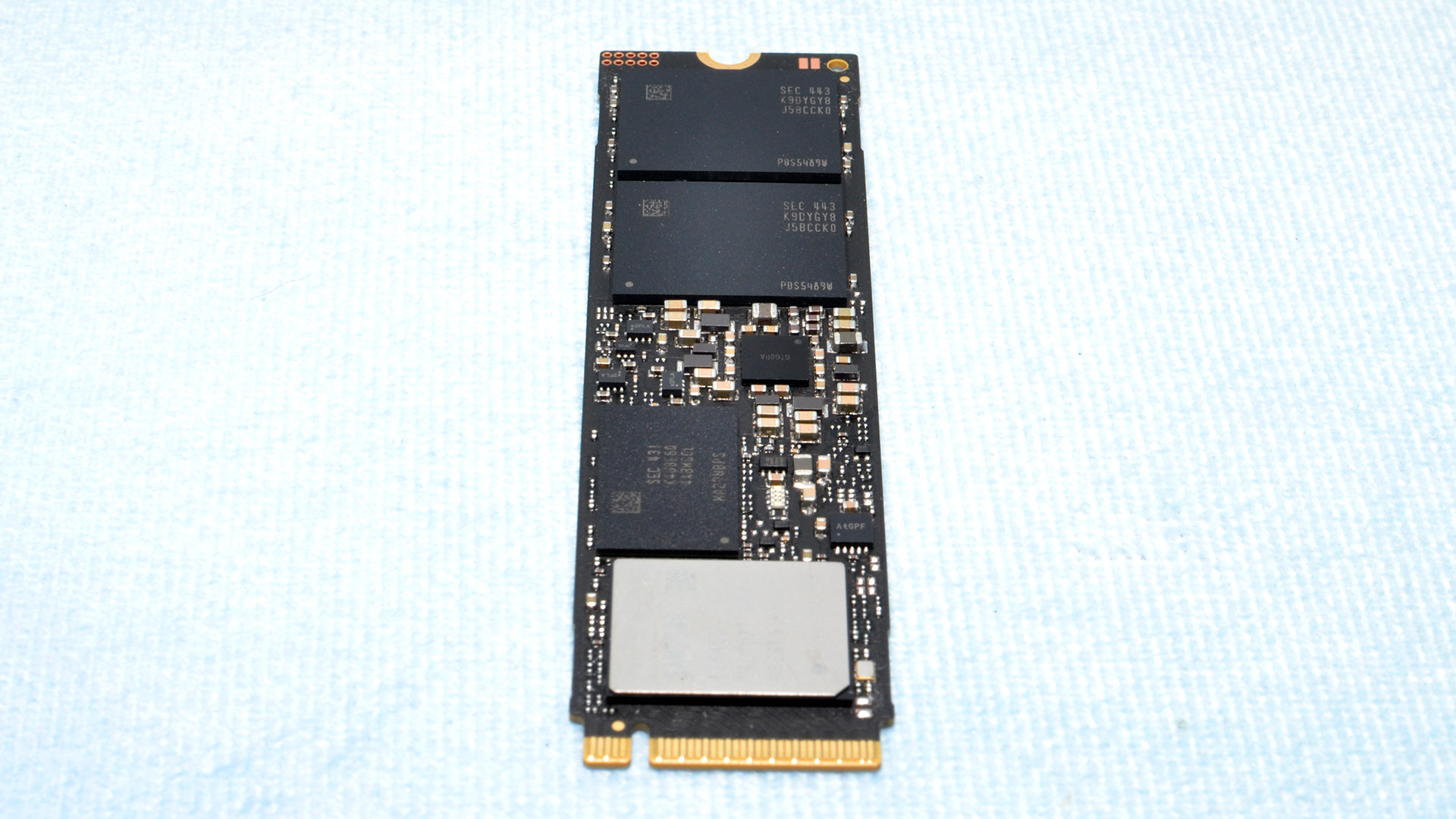Why you can trust Tom’s Hardware
Our expert reviewers spend hours testing and comparing products and services so you can choose the best for you. Find out more about how we test.
Samsung has finally given an answer to the slew of Phison E26-based high-performance PCIe 5.0 SSDs. The 9100 Pro comes in hot, promising up to 8TB of the fastest storage on the planet with the name to back it up. No more compromises with thermal throttling or massive power consumption — the market leader is here to show how it’s done.
Or at least that’s a reasonable expectation. It’s a bit late in the game, especially now that we’ve seen what Silicon Motion’s hardware can do on the Micron 4600. Clearly, Samsung has made careful plans for the 9100 Pro to make sure it would only have to land one blow to retake its position at the top, but time is working against it. In fact, it makes more sense for the 9100 Pro to have a market presence with a capable, affordable drive that avoids the early adopter pitfalls that Phison often faces. It doesn’t have to be the fastest drive around to capture the imagination of storage enthusiasts. It just has to deliver on expectations that would have been considered normal a generation or two ago.
The 9100 Pro is very fast, though, and incredibly efficient for what it is. The option for a heatsink is nice, and the promise of an 8TB SKU this year is a win for those tired of being limited to 4TB or less. Samsung is using reliable hardware in a predictable way for a “safe” high-end storage choice, and really that’s enough for the 9100 Pro to be an easy recommendation. It just happens not to be the best at everything, and it feels more like an optimized, faster, last-generation solution. Which is perfectly acceptable given the novel nature of PCIe 5.0 storage and its issues with power consumption. At the end of the day, Samsung is attempting to deliver a solid and refined option for those who expect such an experience; in that, the 9100 Pro is largely successful.
9100 Pro Specifications
Product | 1TB | 2TB | 4TB | 8TB |
|---|---|---|---|---|
Pricing (Bare) Heatsink | $199.99 $219.99 | $299.99 $319.99 | $549.99 $569.99 | N/A |
Form Factor | M.2 2280 | M.2 2280 | M.2 2280 | M.2 2280 |
Interface / Protocol | PCIe 5.0 x4 / NVMe 2.0 | PCIe 5.0 x4 / NVMe 2.0 | PCIe 5.0 x4 / NVMe 2.0 | PCIe 5.0 x4 / NVMe 2.0 |
Controller | Samsung Proprietary (Presto) | Samsung Proprietary (Presto) | Samsung Proprietary (Presto) | Samsung Proprietary (Presto) |
DRAM | LPDDR4X | LPDDR4X | LPDDR4X | LPDDR4X |
Flash Memory | 236-Layer Samsung TLC (V8) | 236-Layer Samsung TLC (V8) | 236-Layer Samsung TLC (V8) | 236-Layer Samsung TLC (V8) |
Sequential Read | 14,700 MB/s | 14,700 MB/s | 14,800 MB/s | 14,800 MB/s |
Sequential Write | 13,300 MB/s | 13,400 MB/s | 13,400 MB/s | 13,400 MB/s |
Random Read | 1,850K | 1,850K | 2,200K | 2,200K |
Random Write | 2,600K | 2,600K | 2,600K | 2,600K |
Security | TCG Opal 2.0 | Row 10 – Cell 2 | Row 10 – Cell 3 | Row 10 – Cell 4 |
Dimensions Bare | 80.15 (L) x 22.15 (W) x 2.38 (H) mm | Row 11 – Cell 2 | Row 11 – Cell 3 | 80.15 (L) x 22.15 (W) x 2.38 (H) mm |
Dimensions w/HS | 80.15 (L) x 25 (W) x 8.88 (H) mm | Row 12 – Cell 2 | Row 12 – Cell 3 | 80.15 (L) x 25 (W) x 11.25 (H) mm |
Endurance (TBW) | 600TB | 1,200TB | 2,400TB | 4,800TB |
Part Number | MZ-VAP1T0 | MZ-VAP2T0 | MZ-VAP4T0 | MZ-VAP8T0 |
Warranty | 5-Year | Row 15 – Cell 2 | Row 15 – Cell 3 | Row 15 – Cell 4 |
Samsung intends to compete with the 9100 Pro and so has made it clear that it will be available at 1TB, 2TB, 4TB, and 8TB. The last capacity will come later, but its presence in the release materials — similar to how 4TB was with the 990 Pro — shows that they mean business. 8TB has been something of a holy grail for storage enthusiasts and retail SSDs, an elusive capacity that has often been out of reach due to higher dollar-per-gigabyte pricing. This changed with WD’s 8TB Black SN850X, which has even skirted close to the $500 line on sale since its debut. We’ll have to see if the 9100 Pro takes the 8TB crown in a future update. It’s currently expected in Q3 of this year.
Pricing on the immediately available capacities of 1TB, 2TB, and 4TB are $199.99, $299.99, and $549.99, respectively. Adding a heatsink to any of these three adds $20.00 to the price tag. This makes the heatsink the best value at a higher capacity as a portion of the price, and it’s probably worthwhile to get it if your motherboard lacks sufficient M.2 cooling. Taking drives like the Crucial T705 or Corsair MP700 Pro as examples, this pricing is a little bit on the high side but we expect normal street prices for the 9100 Pro to be lower.
Samsung promises up to 14,800 MB/s / 13,400 MB/s for sequential reads and writes and up to 2,200 / 2,800K random read and write IOPS for the 9100 Pro. This is an astounding amount of performance, and the fact that even the smaller SKUs can reach near these heights gives us a hint about what flash Samsung is using. On the flip side, Samsung’s warranty is pretty standard at five years with up to 600TB of writes per TB capacity. Luckily, that’s all you need. Hardware drive encryption is supported through TCG Opal 2.0 which is a nice touch.
9100 Pro Software and Accessories
Samsung remains the gold standard in SSDs for software support with the incredibly popular Samsung Magician. This SSD toolbox is a full-featured application for Windows, macOS, and Android that gives you insights and control for your SSDs. Such software reveals health information, enables firmware updates, controls encryption functions, and more. Some competitors, like WD/SanDisk, do have a comparable toolbox, and such support is something some users want. If you’re looking for that, then the 9100 Pro is currently the best high-end PCIe 5.0 option.
9100 Pro: A Closer Look
The Samsung 9100 Pro is using a single-sided design with an SSD controller, a DRAM package, and two NAND flash packages. With this layout and due to the maximum density of the flash currently in use, an 8TB SKU would require four flash packages which would make it double-sided. 8TB would therefore not be great for some systems, but in most cases it would be a worthwhile tradeoff for that amount of flash with a drive of this caliber. The drive can come with or without a heatsink, although this drive may require one for optimal operation in some systems.
The 9100 Pro is using Samsung’s new Presto SSD controller, although the term “new” might be somewhat subjective. The controller is made in Samsung’s 5nm process — the same used for the Piccolo that’s used on the 990 EVO and 990 EVO Plus. It’s eight-channel, like the 990 Pro’s Pascal, but has a PCIe 5.0 interface. The Piccolo is capable of running with two lanes of 5.0, potentially useful for some future laptops, but this one can use all four for maximum throughput. The controller is set up for a 2,400 MT/s bus — the same as the Piccolo when used in the 990 EVO Plus but above the Pascal’s 2,000 MB/s — which enables it to saturate the link. The controller appears to be using a penta-core ARM Cortex R-8 design, which is similar to previous designs from Samsung. That is a lot of horsepower, reflected by the maximum IOPS.
All of this technical information can be condensed into a few observations for the more casual reader. Primarily, Samsung isn’t really pushing the innovation envelope with this hardware. In some respects they don’t have to as the company was already ahead in some ways, but if you’re expecting something revolutionary then you may be disappointed. This is more of the same from Samsung so you know what you’re going to get. In a way that’s a good thing, but it also means Samsung is falling back on its name again. We know Samsung has better technology in the pipeline so we suspect the 9100 Pro is only the first model we’ll see in this market segment and, quite frankly, those who buy Samsung for the name will probably be satisfied with this arrangement. This is not a bad drive and it’s likely better positioned than the 990 EVO was at its launch.

Next, we turn to the DRAM and flash memories. Samsung’s LPDDR4X is very efficient, and its use makes sense given that Samsung is still giving the typical 1GB of memory per TB capacity ratio on its flagship drives. This memory could help improve overall drive efficiency under load to some degree. Looking at the flash, Samsung is using its 236-Layer V8 TLC flash, the same used on the 4TB 990 Pro that came out some time after the 990 Pro’s launch. This flash later made its way onto the smaller 990 Pro SKUs. While not having the best performance in every corner, this flash allows for higher-capacity drives.
In practical terms, this choice in flash makes sense. It runs at 2,400 MT/s and so matches with the controller and has the ability to saturate PCIe 5.0 with eight channels. It also comes in both 512Gb and 1Tb configurations, with the former used on smaller SKUs to improve interleaving for maximum performance and the latter on bigger SKUs to pack in more flash. Samsung’s V8 flash is mature at this point and so it makes sense from a production standpoint, too. The real problem might be that this is no longer cutting-edge technology and it really feels like Samsung intends to later offer a different product and/or move the 9100 Pro to the next generation of flash in the future. Given the specifications of the 8TB SKU it could go either way.
MORE: Best SSDs
MORE: Best External SSDs
MORE: Best SSD for the Steam Deck






